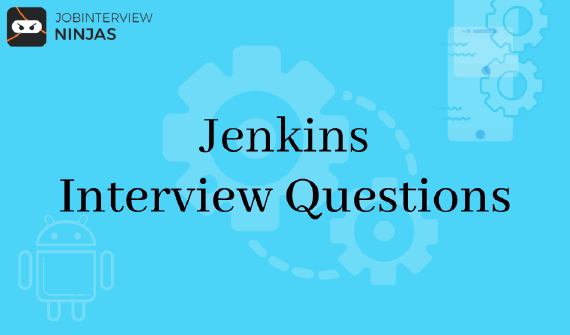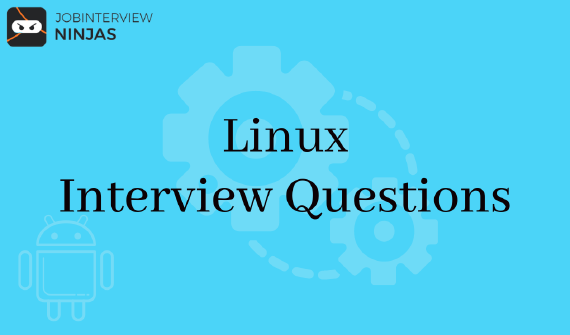
Top 40 Jenkins Interview Questions And Answers For Freshers/Experienced
If you are looking for a career in software development, then Jenkins is definitely worth exploring. This widely used …

Candidates who are appearing for a technical interview can prepare their Spring Boot Interview Questions from this page. Here we have given 50 Spring Boot Interview Questions and Answers which can be asked in the job interview. Read on to know more about Spring Boot topics and coding from the below section.
About Spring Boot: It is an open-source Java framework used to make a micro Service. It is created by Pivotal Team for making build stand-alone spring-based applications.
2. Tell me some benefits of Spring Boot?
3. Tell the features of Spring Boot?
4. By using Maven, How you'll create a Spring Boot application?
5. Explain @RestController annotation in Spring Boot?
6. Explain Spring Boot dependency management?
7. Tell about Spring Boot properties?
8. Explain Spring Boot Starters?
9. What is Spring Boot Actuator?
12. Tell me the way to connect Spring Boot to the database by using JPA?
13. Tell me the way to connect the Spring Boot application to the database by using JDBC?
14. Explain @RequestMapping annotation in Spring Boot?
16. When a Spring Boot Application is “Run as Java Application” then what happens in the background?
17. Tell the requirements for a spring boot System.
18. Name some Spring Boot key components?
19. Why Spring Boot over Spring?
20. Name some starter dependency of the Spring boot module?
21. What is the working of Spring Boot?
22. What @SpringBootApplication annotation does internally?
23. Tell me the objective of using @ComponentScan in the class files?
24. How does a spring boot application get started?
25. Explain Spring Initializer?
26. Explain Spring Boot CLI and its benefits?
27. Tell about the Annotations that Spring Boot Offers?
28. Do we make a non-web application in Spring Boot?
29. Can we change the port of the implanted Tomcat server in Spring Boot?
30. Name the default port of tomcat in spring boot?
31. Are we able to override or substitute the Embedded tomcat server in Spring Boot?
32. Are we able to disable the default web server in the spring boot application?
33. Tell me how will you disable a specific auto-configuration class?
34. Differentiate between @Controller and @RestController in Spring Boot?
35. Differentiate between GetMapping and RequestMapping?
36. What are the actuator-provided endpoints used for observing the Spring boot application?
37. Tell me the way to get the list of all the beans in your Spring boot application?
38. How to inspect the environmental properties in Spring Boot application.
39. Tell all the ways to enable debugging log in the spring boot application?
41. How to deploy another server with Spring Boot?
42. Tell the steps to link an external database like MySQL or Oracle?
43. How is Hibernate selected as the default execution for JPA without any configuration?
44. How to guide an auto-configuration to reinforce when a bean exists?
45. Tell me the layer where the boundary of a transaction start?
46. How does path=”sample”, collectionResourceRel=”sample” work with Spring Data Rest?
47. Tell the way to register a custom auto-configuration.
48. How are you Configuring Log4j for logging?
49. Can you use jetty rather than tomcat in spring-boot-starter-web?
2. Tell me some benefits of Spring Boot?
3. Tell the features of Spring Boot?
4. By using Maven, How you'll create a Spring Boot application?
5. Explain @RestController annotation in Spring Boot?
6. Explain Spring Boot dependency management?
7. Tell about Spring Boot properties?
8. Explain Spring Boot Starters?
9. What is Spring Boot Actuator?
To use Thymeleaf we must add it into our pom.xml file like:
12. Tell me the way to connect Spring Boot to the database by using JPA?
13. Tell me the way to connect the Spring Boot application to the database by using JDBC?
14. Explain @RequestMapping annotation in Spring Boot?
Spring is a web-based application framework established on Java. It gives tools and libraries to make a fully customized web application.
Whereas Spring Boot is a module of spring used to make spring application projects that can just execute.
16. When a Spring Boot Application is “Run as Java Application” then what happens in the background?
17. Tell the requirements for a spring boot System.
Spring Boot 2.1.7.RELEASE requires
Explicit build support
Servlet Container Support
18. Name some Spring Boot key components?
19. Why Spring Boot over Spring?
20. Name some starter dependency of the Spring boot module?
21. What is the working of Spring Boot?
By using annotation, it automatically configures your application on the basis of dependencies that you have added to the project. The entrance point of the spring boot application is the class that holds @SpringBootApplication annotation and the primary method.
Spring Boot automatically checks all the components contained in the project by using @ComponentScan annotation.
22. What @SpringBootApplication annotation does internally?
23. Tell me the objective of using @ComponentScan in the class files?
24. How does a spring boot application get started?
25. Explain Spring Initializer?
26. Explain Spring Boot CLI and its benefits?
Spring Boot CLI stands for Spring Boot command-line interface that permits you to make a spring-based java application using Groovy.
Example: You need not make getter and setter process or access modifier, return statement. If you are using the JDBC template, it automatically does it for you.
27. Tell about the Annotations that Spring Boot Offers?
The main annotation lies in org.springframework.boot.autoconfigure and its sub-packages. Here are some of them:
@EnableAutoConfiguration: It is to create Spring Boot search for auto-configuration beans on its classpath and automatically spread them.
@SpringBootApplication: It is used to represent the primary class of a Boot Application. This annotation incorporates @Configuration, @ComponentScan, and @EnableAutoConfiguration annotations with their default attributes.
28. Do we make a non-web application in Spring Boot?
29. Can we change the port of the implanted Tomcat server in Spring Boot?
30. Name the default port of tomcat in spring boot?
31. Are we able to override or substitute the Embedded tomcat server in Spring Boot?
32. Are we able to disable the default web server in the spring boot application?
33. Tell me how will you disable a specific auto-configuration class?
By using exclude attribute of @EnableAutoConfiguration if you require auto-configuration then, not apply to any specific class.
//use of exclude
@EnableAutoConfiguration(exclude={className})34. Differentiate between @Controller and @RestController in Spring Boot?
35. Differentiate between GetMapping and RequestMapping?
The @GetMapping is a written annotation that works as a shortcut for @RequestMapping (method = RequestMethod.GET). Both these processes support consumes. The consume options are:
consumes = “text/plain”
consumes = {“text/plain”, “application/*”}
36. What are the actuator-provided endpoints used for observing the Spring boot application?
37. Tell me the way to get the list of all the beans in your Spring boot application?
38. How to inspect the environmental properties in Spring Boot application.
39. Tell all the ways to enable debugging log in the spring boot application?
41. How to deploy another server with Spring Boot?
Note: The above steps depend on the server you choose.
42. Tell the steps to link an external database like MySQL or Oracle?
43. How is Hibernate selected as the default execution for JPA without any configuration?
44. How to guide an auto-configuration to reinforce when a bean exists?
45. Tell me the layer where the boundary of a transaction start?
46. How does path=”sample”, collectionResourceRel=”sample” work with Spring Data Rest?
@RepositoryRestResource(collectionResourceRel = “sample”, path = “sample”)
public interface SampleRepository extends
PagingAndSortingRepository<Sample, Long>
Path: This section is used to cite the segment under which the resource is to be shipped.
collectionResourceRel: This value is utilized to make links to the collection resource.
47. Tell the way to register a custom auto-configuration.
48. How are you Configuring Log4j for logging?
49. Can you use jetty rather than tomcat in spring-boot-starter-web?

If you are looking for a career in software development, then Jenkins is definitely worth exploring. This widely used …

In this post, we will cover a few Linux interview questions and their answers. So, let’s get started. In this …